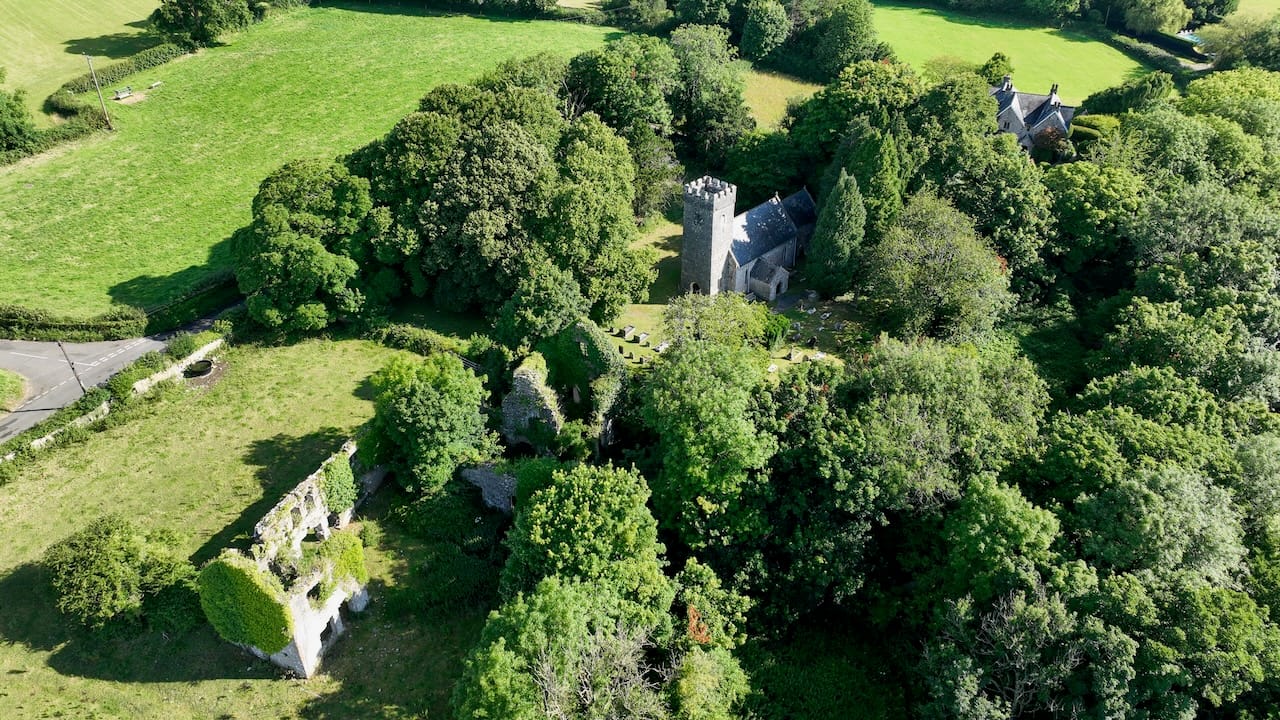Origins and Early Records
St Illtyd’s Church in Llantrithyd traces its origins to the medieval period, with the earliest records indicating a Norman foundation in the 12th century. The church is dedicated to St Illtyd (Illtud), a 5th–6th century Welsh saint renowned for founding a monastery at Llantwit Major. Local lore even suggests the village name “Llantrithyd” comes from Trynihid, said to be Illtyd’s wife. A fragment of a Norman-era churchyard cross survives – a carved stone base with blind arcading (circa 1200) now set by the tower, indicating the site’s early medieval use for Christian worship.

Medieval Rebuilding and Architectural Development
The present building dates mainly from a 14th-century rebuild, when the church was expanded in the Gothic style. This included the nave, chancel, and west tower. The tower is square with thick sloping walls and crenellated battlements. A medieval carved block with blind arcading is set at its base. The chancel arch and the Perpendicular-style rood screen date from the 14th or 15th century and still survive. A 14th-century stone effigy of a priest or knight lies in the nave, and the south porch includes 16th-century roof timbers. By the end of the Middle Ages, the church had its essential current layout.
The Bassett and Mansel Era (16th Century)

The Bassets were a Norman family who settled in Glamorgan in the early 14th Century, and spread out and acquired extensive estates. Their original manor was Beaupre, near St.Hilary, where Sir Elias Basset was seated in 1330. His great-great-grandson John Basset of Beaupre died in 1492, leaving Beaupre to his eldest son James, whose descendants held that Estate until about 1830 but did not live there after about 1750. Bassets also built and lived at Fishweir and Llanvithyn. Thomas Basset (younger son of John Basset of Beaupre) inherited Llantrithyd through his wife Ann. The original house of Llantrithyd Place is said to have been built by her grandfather, Evan ap David in about 1440.
Thomas' son John Basset was a member of the Inner Temple, M.P., and Sheriff of Glamorgan in 1545. He became Surveyor of lands for Queen Catherine Parr, and Commissioner of Chantries and Surveyor of the Court of Augmentations for Glamorgan on the dissolution of the monasteries.
He died in 1554. His son by his first wife, Alice Love, Thomas, moved to Bonvilston (where his descendants still held the Bonvilston Estate up until the 1960s). His second wife was Elizabeth Norton of Abbotsleigh, Bristol, who lived until 1596, and their only daughter, Elizabeth, was left Llantrithyd, in preference to her half-brother.
Elizabeth Basset married Anthony Mansel in about 1560, a younger son of Sir Rice (or Reece) Mansel (who had purchased the Margam Estate from the Crown in about 1540). As appears from the inscription on the monument, they had three sons, Edward, Ryce, and William, who all died young, and four daughters, Elizabeth and Anne, who also died young, Mary, who married Sir Thomas Aubrey, and Cissil. John and Elizabeth Basset and Anthony and Elizabeth Mansel are all four entombed in it.
John and Elizabeth Basset are kneeling on the wall monument on top of the tomb. In full armour, Anthony Mansel and his Elizabeth lie on top of the coffin tomb beneath them. Their children are the "weepers" below the tomb, and the children's names are inscribed on the stone plaque on the wall to the left of the altar: "Elizabeth 1567, Edward 1573, Mary Aubre, Anne 1570, Ryce 1583, William 1573, Cissil"
The inscription on top of the tomb reads.
"Here lyeth the bodyes of John Basset Esquier/ and Elizabeth his wife, daughter of Andrew/ Norton of Bristow Esquir who had issue by El/ izabeth his wife on only daughter named Eliza beth maried to Anthony Mansel Esquier second/sonne to Sir Reece Mansel of Margam Knight al/ whoes bodyes are here intoombed /
which Anthony had issue by the sayd Elizabeth/ three sonnes fower daughters of al which/ too daughters survives. The elder maried to/ Thomas Awbrey Esquier the younger mary/ ed to Rawligh Bussye Esquier."
The Aubrey Family and Later Patronage (17th–18th Centuries)
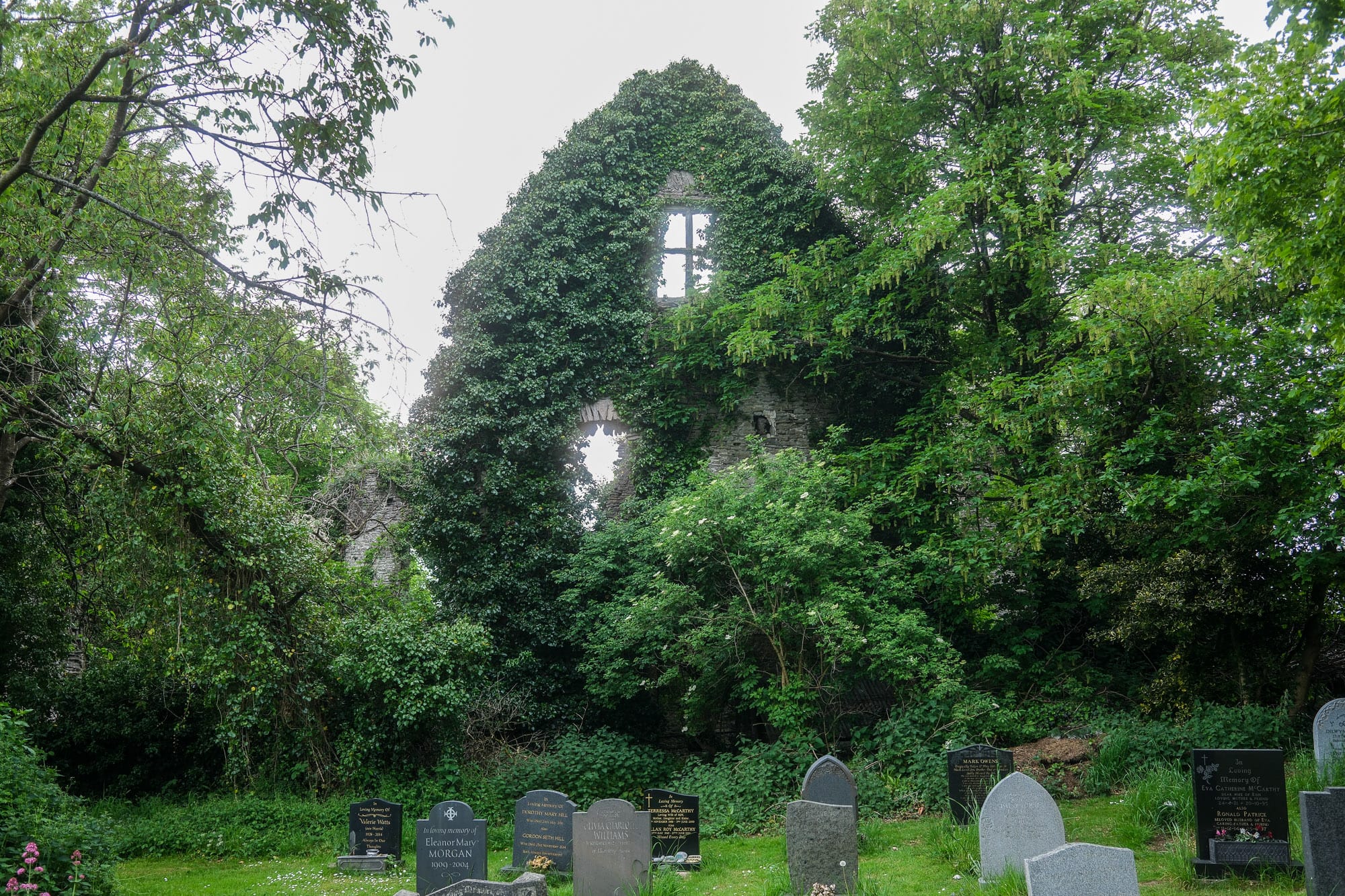
Mary, daughter of Anthony and Elizabeth Mansel, inherited the Llantrithyd Estate. She married Sir Thomas Aubrey in 1586, whose family "of high antiquity" was of Cantreff in Breconshire. They had fourteen children, many of whom died young.
Their son, Sir John Aubrey, was a strong Royalist and was created Baronet in 1660. The large cartouche on the west wall shows the combined arms of Aubrey and Mansel, and this and the panel above the south door were originally inside Llantrithyd Place.
Sir John's sister Elizabeth was married at Llantrithyd in 1635 to Sir Rice Rudd of Aberglasney. There were finely laid out gardens at Llantrithyd Place, including a raised stone walkway, walled terraces and fishponds linked by a canalised stone-lined stream. It seems very possible that Elizabeth Rudd was responsible for, or certainly closely involved in, the laying out of the cloister garden and other works at Aberglasney.

A deer park was thought to have been created by Sir John Aubrey sometime after 1660, following the Restoration of the Monarchy. It is noted on a map from 1675, when it was stocked with fallow deer. This formed part of the extensive Aubrey family estates, which at their peak covered 7,000 acres in Glamorgan. Llantrithyd Place was described as one of the finest Tudor houses in Glamorgan. Llantrithyd Deer Park was "disparked" around 1900, but was restocked in the 1990s and still operates today.
The second Baronet, Sir John Aubrey, was killed by a fall from his horse in 1700. He married Margaret Lowther of Lowther Hall in Westmoreland first and then Mary Lewis, heiress of William Lewis of the Van, Caerphilly, who brought a very fair inheritance into this family.

What he was, those who conversed with him best knew." Part of that inheritance was the Manor of Boarstall in Buckinghamshire.
The central monument on the North wall is of Sir Thomas Aubrey, fifth Baronet (1739-1826) and his wife Dame Martha, and recites first the achievements and distinctions of his Aubrey ancestors. This Sir Thomas was "a most indulgent husband and father, as well as a truly just and honourable man". Dame Martha "was lamented by all who had the happiness of knowing her...a most affectionate, a most judicious and a most liberal hearted mother"
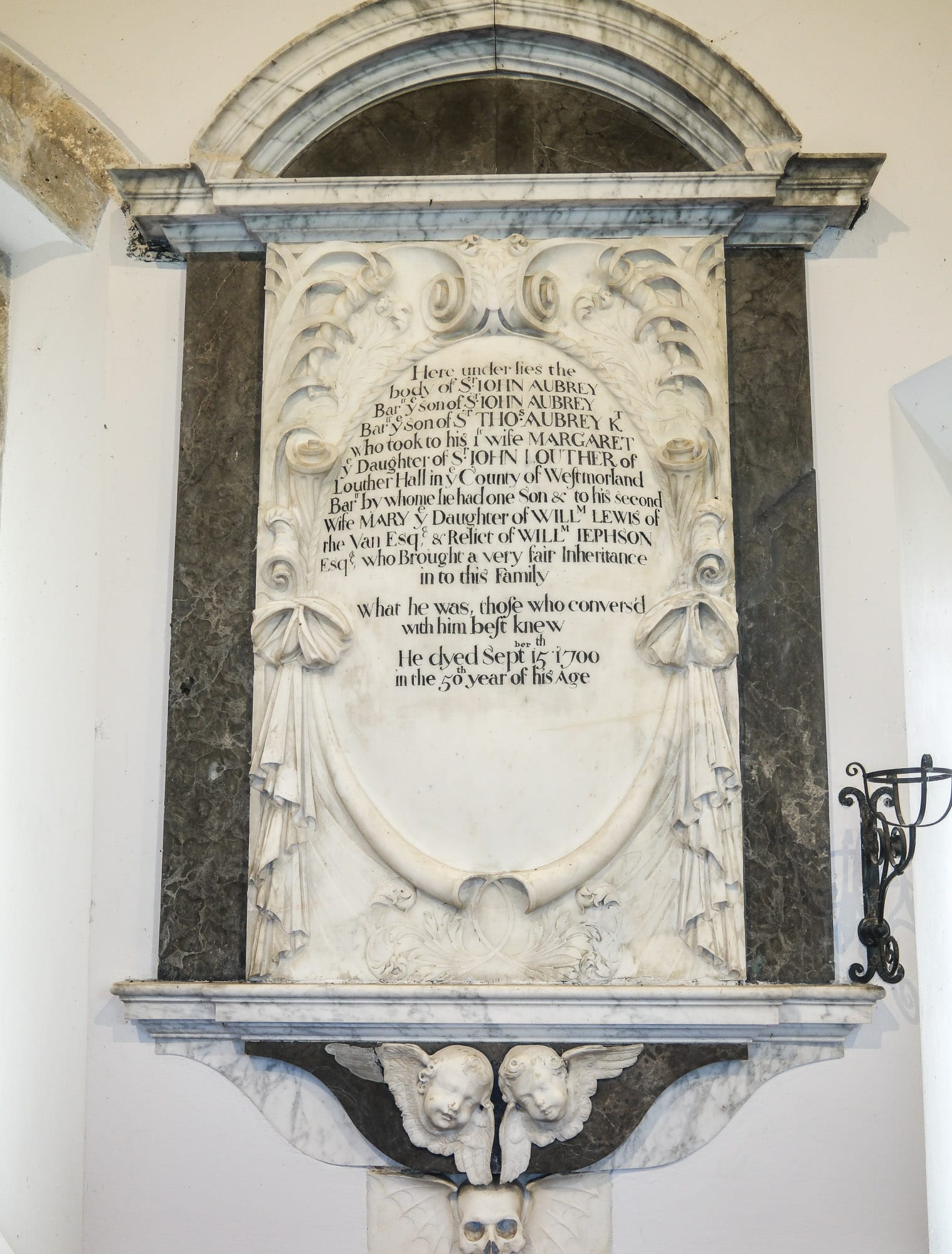
The two side monuments are of their younger son Richard Aubrey of Ash Hall, Ystradowen, and his wife Frances. Richard's monument reveals that he "delighted all who partook of his society", and on hers is inscribed "Learn to live as she lived and then you need not be afraid to die".
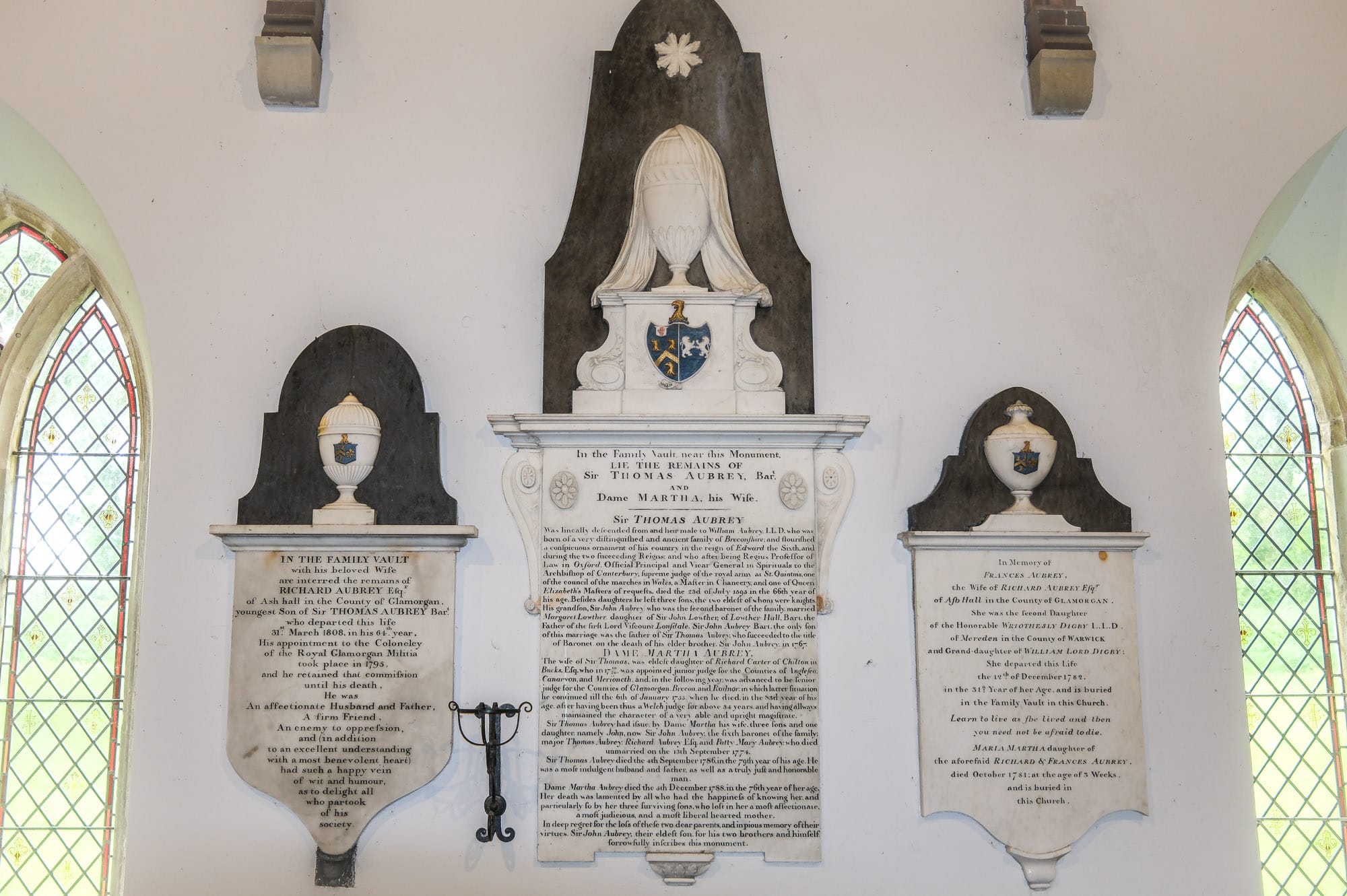
There is also a monument to Jenkin Lyson, Steward to Sir John Aubrey, the second, who died in 1705, and a more elaborate one to Richard Mumford, for many years Steward to Sir John, the fifth, who died in 1803.
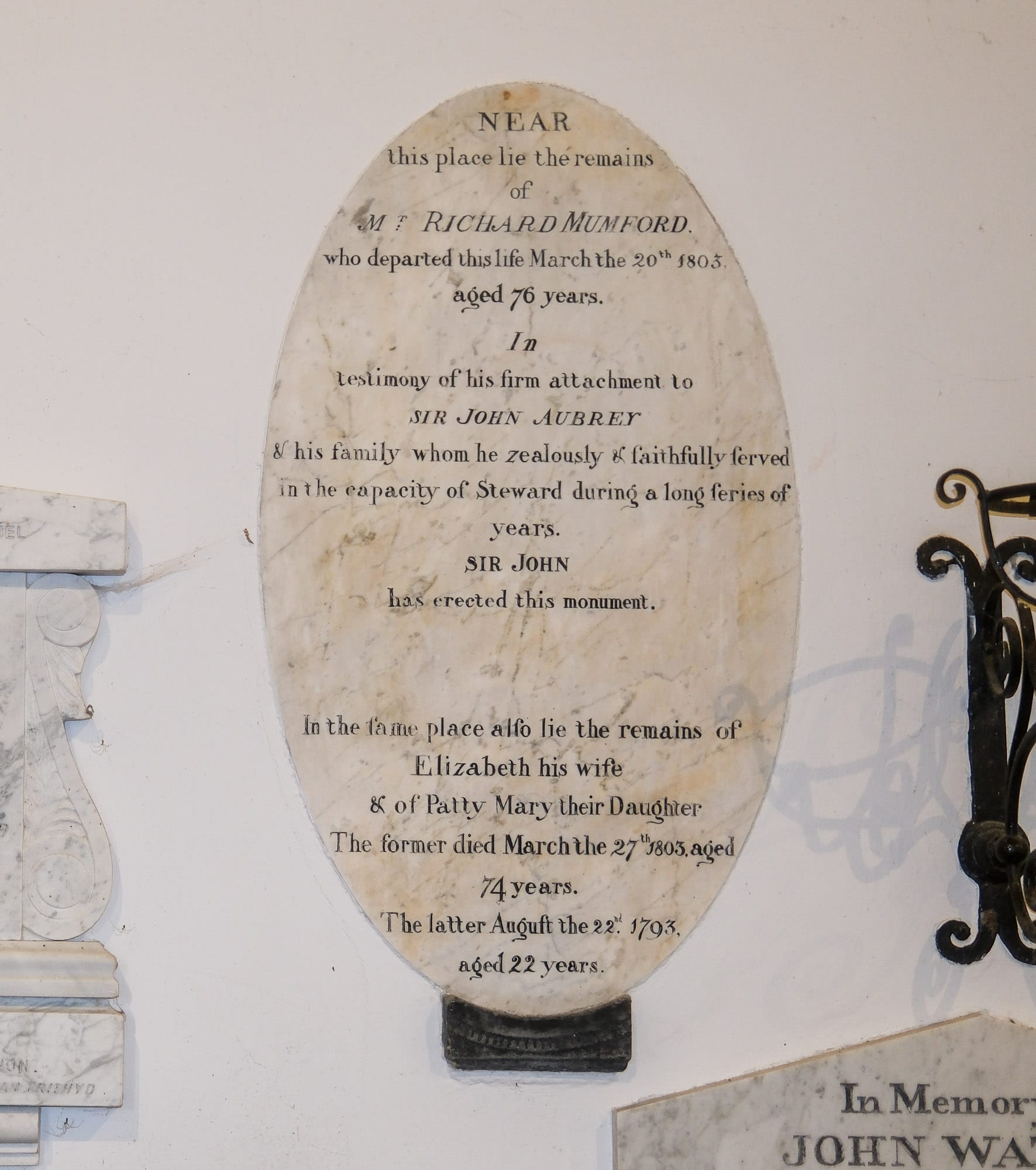
A tragic accident
The Aubrey family’s connection to Llantrithyd Place significantly changed following a tragic accident. In 1777, Sir John Aubrey, 6th Baronet’s, five-year-old son, also named John, died from accidental poisoning.
This tragic event occurred at Boarstall House, their Buckinghamshire estate. The young boy consumed porridge contaminated by an untinned copper pot or arsenic-laced oats intended for rats. Overcome with grief and possibly self-blame, Sir John found Boarstall House unbearable and had much of it demolished, relocating to Dorton House.
While the poisoning didn’t happen at Llantrithyd, the Aubreys had already spent less time there. Their interests, particularly after acquiring Boarstall, had shifted towards London. However, the death of his only son likely further diminished Sir John’s attachment to his Welsh estates. Llantrithyd Place was abandoned in the late 18th or early 19th century and ruined.
Without a direct heir, the Llantrithyd estate eventually passed to Sir John’s nephew upon his death in 1826, but by then, the house was already dilapidated, and the new heir chose not to live there.
He changed his surname by Royal Licence to Aubrey-Fletcher. The Llantrithyd Estate was sold in about 1910 to Henry Radcliffe, a Cardiff ship-owner. The Boarstall Estate was sold in 1941 to Ernest Cook, who gave Boarstall Tower to the National Trust. The current Sir Henry Aubrey-Fletcher lives at Chilton and is the Lord Lieutenant of Buckingham
18th–19th Century Renovations and the Victorian Restoration
A west gallery was added in 1711, and extra pews in 1839. Rev. Roper Trevor Tyler, rector for 47 years until he died in 1885, oversaw many repairs and planted the lime avenue to the church.

John Prichard restored the roof in 1882. In 1897, G. E. Halliday led a major restoration: the gallery was removed, the church re-floored and re-pewed, and the porch rebuilt. Halliday relocated a medieval rood loft doorway and installed Aubrey armorial plaques from the manor.
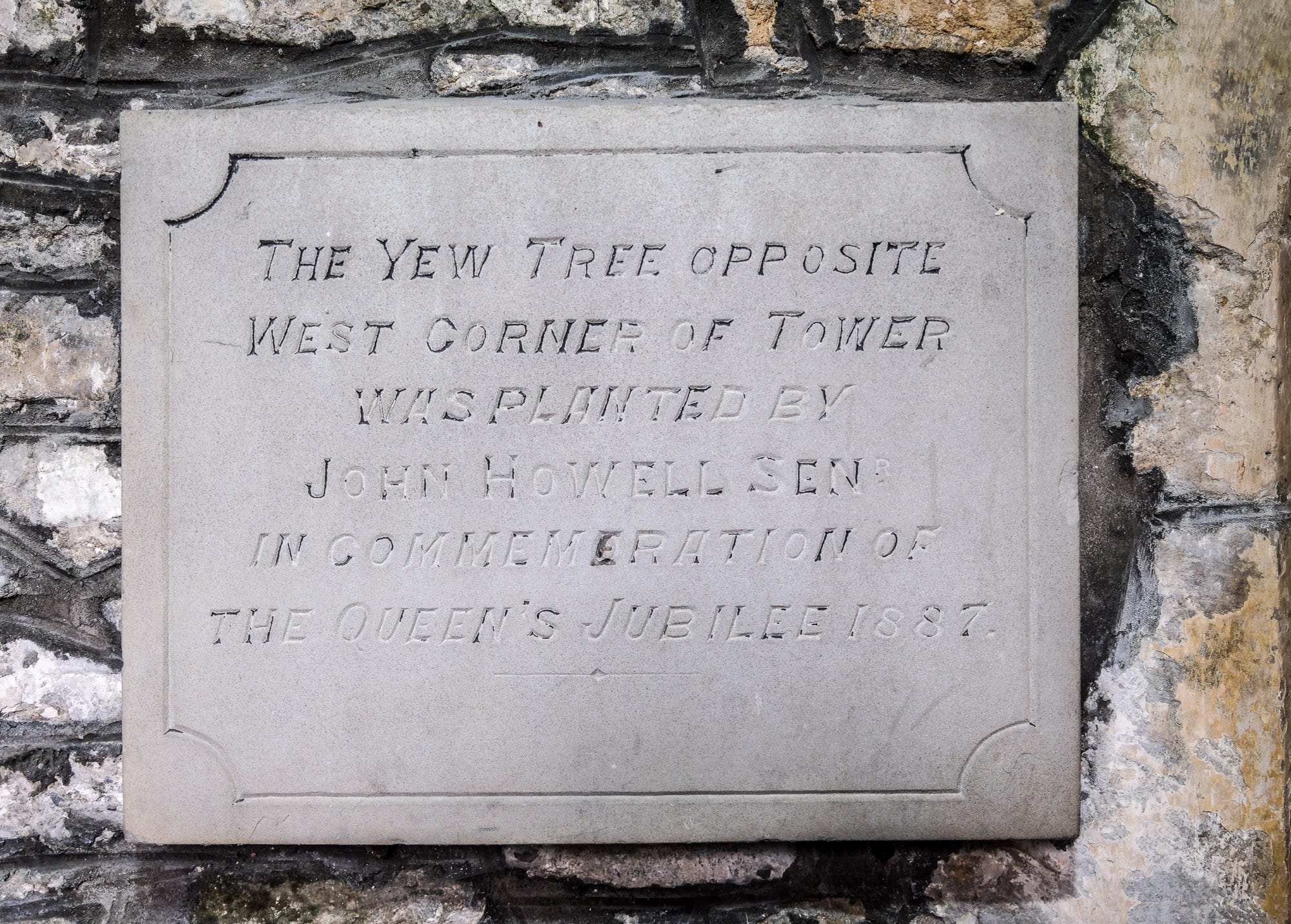
20th Century to Present: Preservation and Community Role
In 1963, the church received Grade II* listed status. A memorial plaque to Pilot Officer David Roy Watts, who was killed in WWII, was installed.

In 2016, a significant conservation project restored the church’s fabric and monuments, including the Bassett/Mansel tomb. Today, the church is part of the Benefice of Llancarfan with Llantrithyd and remains a focal point of local heritage, visited for its medieval architecture and historic monuments.
